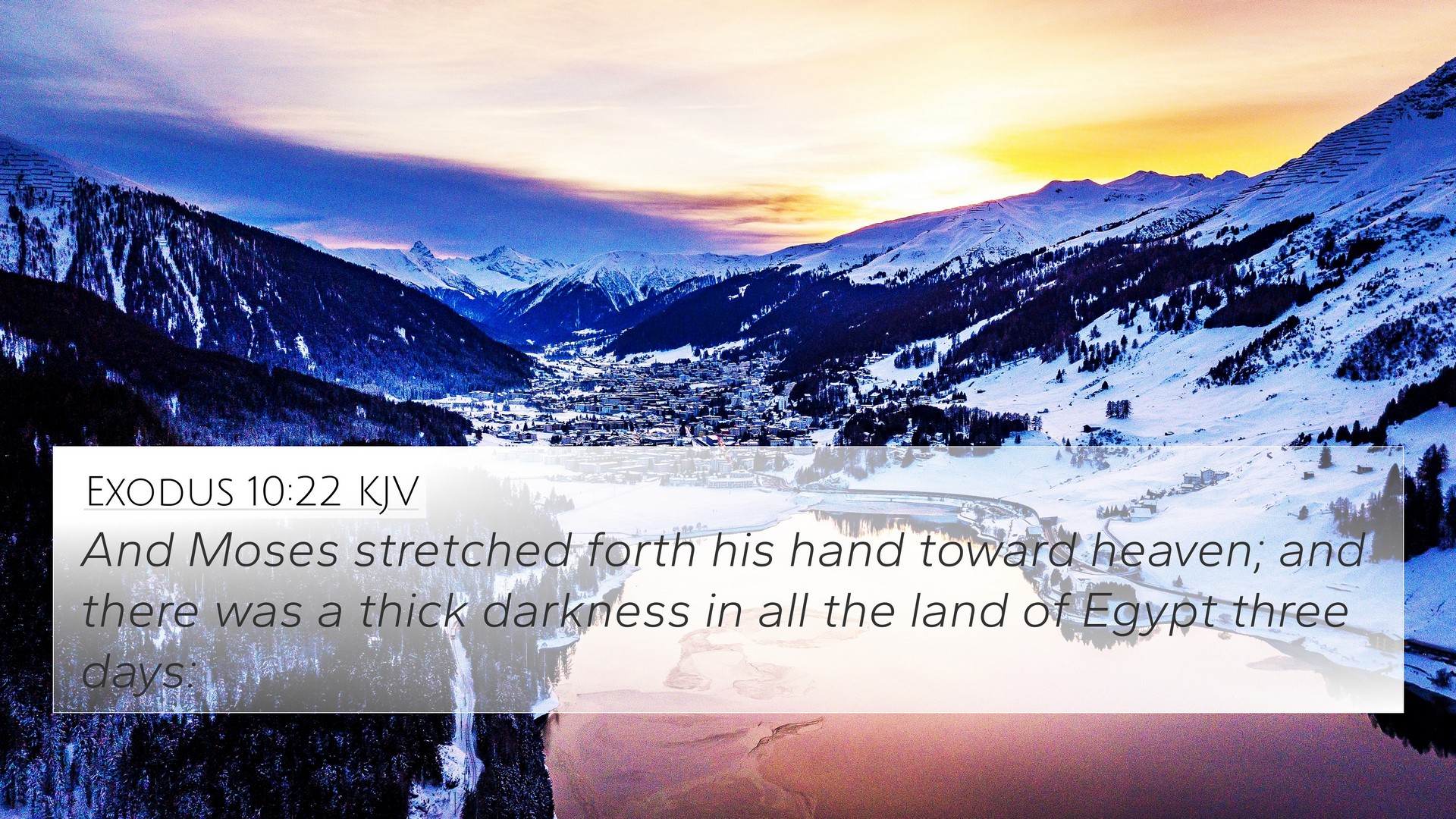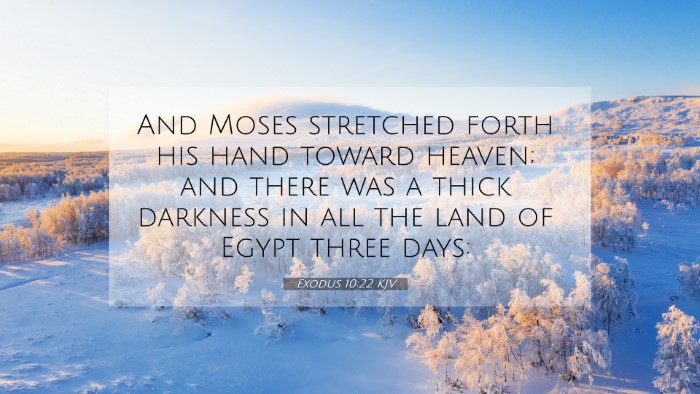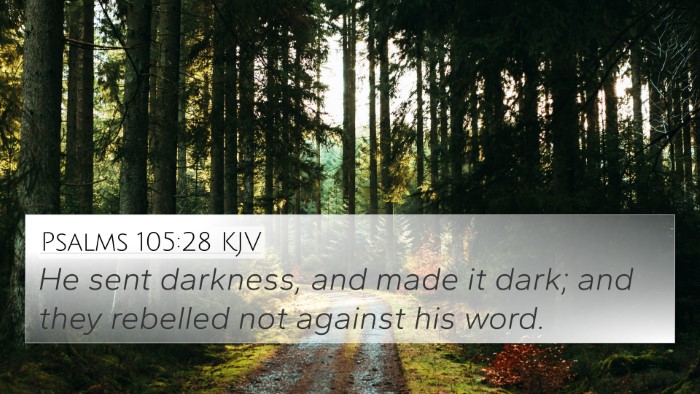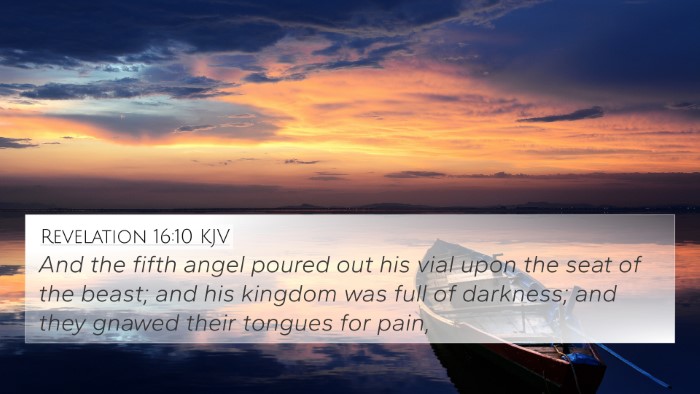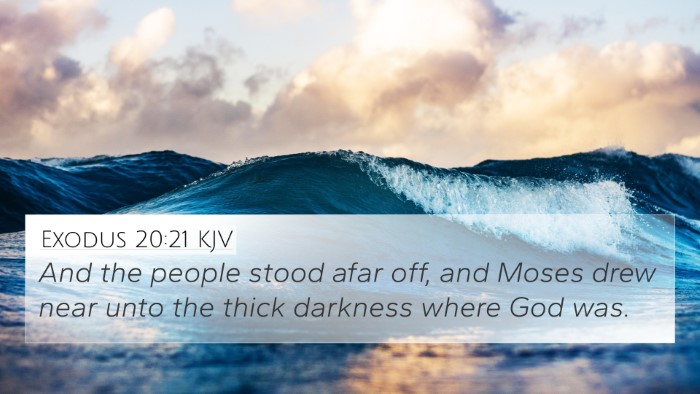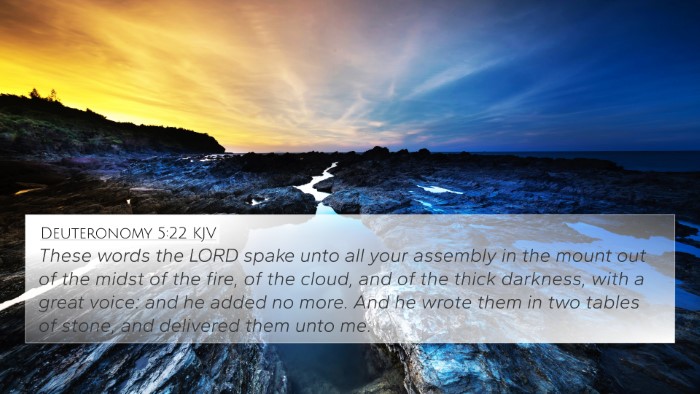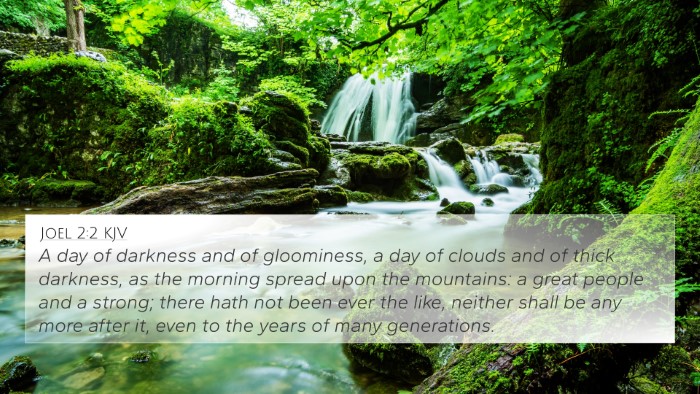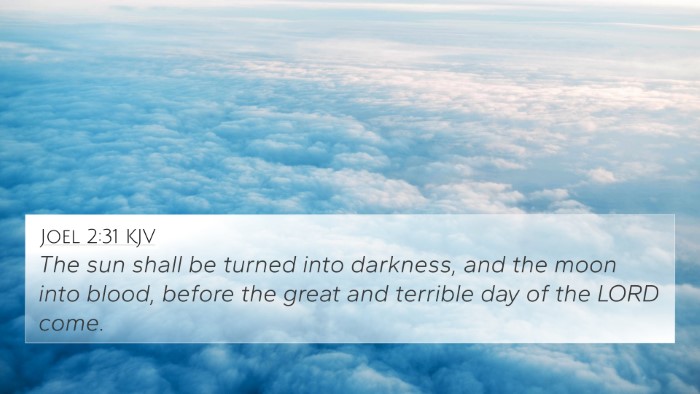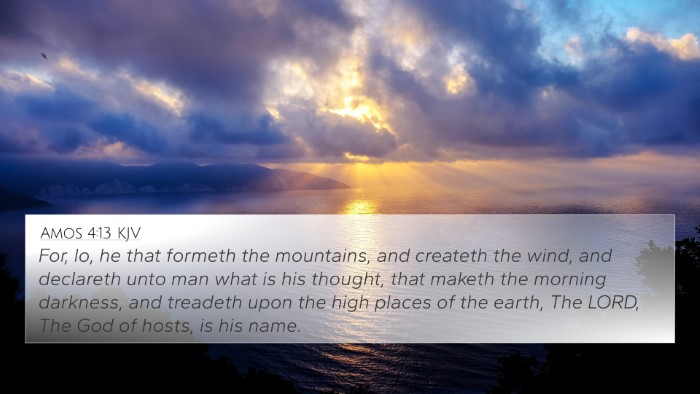Understanding Exodus 10:22
Exodus 10:22 reads: "Moses stretched out his hand toward heaven, and there was a thick darkness in all the land of Egypt three days." This verse belongs to the narrative of the plagues inflicted upon Egypt as a consequence of Pharaoh's stubbornness and refusal to let the Israelites go. The implications of this act extend beyond the immediate physical darkness to deep spiritual and theological meanings that have been discussed extensively in public domain commentaries.
Summary of Insights
The essence of Exodus 10:22 reveals a significant act of divine intervention. Moses, acting as a mediator between God and Pharaoh, emphasizes God's power over creation.
Theological Interpretations
This passage can be studied through various theological lenses:
- Divine Sovereignty: The darkness symbolizes God's control over the forces of nature, demonstrating His authority over even the sun, which is central to Egyptian worship.
- Judgment and Warning: This plague serves as a clear indication of God's judgment against Egyptian idolatry, especially against the sun god Ra.
- Contrast with Israel: While Egypt suffered darkness, the land of Goshen, where the Israelites dwelled, remained illuminated, highlighting God's separation of His people from those under judgment.
Connections to Biblical Texts
Exodus 10:22 offers a rich ground for cross-referencing with various other biblical texts:
- Genesis 1:2-3: The theme of darkness and light parallels the creation narrative where God speaks light into existence.
- Psalm 105:28-29: This passage refers to how God sent darkness over the land of Egypt, reinforcing the narrative of Exodus.
- Isaiah 60:1: The prophetic encouragement of emerging from darkness connects with the Israelite experience escaping Egypt.
- John 1:4-5: The New Testament reflects on Jesus as the light, contrasting the darkness that encapsulated Egypt and foreshadowing the ultimate revelation of Christ.
- Revelation 16:10: Similar themes of darkness occur during the final plagues, indicating the continuity of God's intervention in history.
- Matthew 27:45: Darkness during Christ’s crucifixion parallels the darkness in Egypt, suggesting God’s judgment and sorrow over sin.
- Lamentations 3:2: The imagery of darkness as a metaphor for suffering and judgment reflects a broader biblical theme of God's dealings with humanity.
Comparative Analysis of Related Verses
When interpreting Exodus 10:22, it’s beneficial to employ a comparative Bible verse analysis to illustrate the connections between different scriptures:
- Cross-referencing Biblical texts facilitates understanding how different narratives reflect or contrast each other.
- Bible verses that relate to each other often reveal deeper theological insights about God’s character and purposes.
- Thematic Bible verse connections help in understanding recurring motifs, such as light and darkness, in the biblical narrative.
- Bible verse parallels such as that between darkness in Exodus and metaphoric darkness in our lives can serve as profound spiritual lessons.
Using Cross-References for Deeper Study
To enrich studies of Exodus 10:22, here are some recommended tools and methods:
- Bible concordance: Utilize a concordance to locate words related to darkness and divine judgment.
- Bible cross-reference guide: Explore guide materials that identify significant connections between verses.
- Cross-reference Bible study: Engage in group studies that focus on linking related scriptures.
- Bible cross-reference system: Develop a personal system for noting insights during reading and study.
- Comprehensive Bible cross-reference materials: Access these to compile themes for deeper understanding.
Conclusion
Exodus 10:22 stands as a pivotal point in the Exodus narrative, rich in theological implications and connections that resonate throughout the Bible. By linking this verse with others, such as Genesis 1 and John 1, we not only uncover deeper meanings but also develop a comprehensive understanding of God's overarching narrative of redemption.
